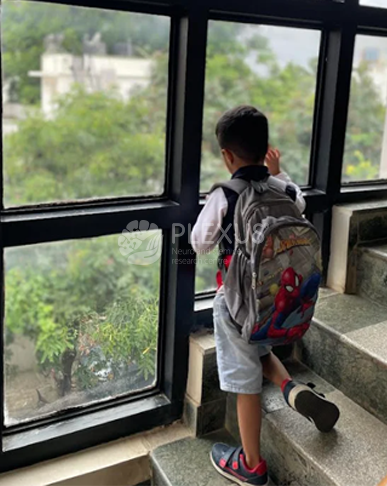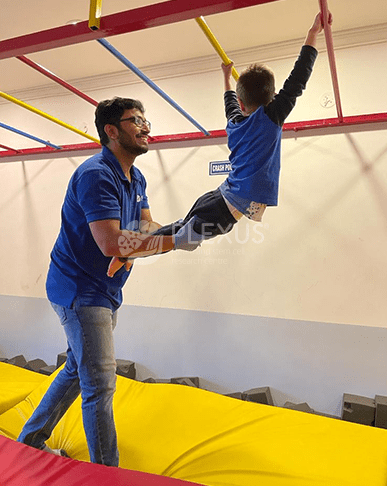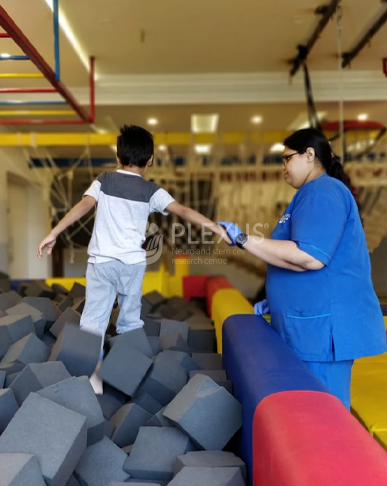- About Us
- Cell Therapy
- Neurology
- Disorders
- Services
- All Therapies
- Regenerative Rehabilitation
- Rehabilitation for Stroke
- Rehabilitation for Spinocerebellar Ataxia
- Parkinson’s Disease Rehabilitation
- Multiple Sclerosis Rehabilitation
- Rehabilitation for Spinal Cord Injury
- Rehabilitation for Motor Neuron Disease
- Rehabilitation for Cerebral Palsy
- Brachial Plexus Injury rehabilitation
- Rehabilitation for Global Developmental Delay
- Childhood Disorders Clinic
- Outpatient Services
- Ask a question
- Request an appointment
- About Us
- Cell Therapy
- Neurology
- Disorders
- Services
- All Therapies
- Regenerative Rehabilitation
- Rehabilitation for Stroke
- Rehabilitation for Spinocerebellar Ataxia
- Parkinson’s Disease Rehabilitation
- Multiple Sclerosis Rehabilitation
- Rehabilitation for Spinal Cord Injury
- Rehabilitation for Motor Neuron Disease
- Rehabilitation for Cerebral Palsy
- Brachial Plexus Injury rehabilitation
- Rehabilitation for Global Developmental Delay
- Childhood Disorders Clinic
- Outpatient Services
- Ask a question
- Request an appointment
Understand Your Child’s World
Navigate Life With Sensory Processing Disorder
Is your child overly sensitive to things in their vicinity? Do common sounds such as fire alarms, sirens, school bells, or fireworks give them a headache? Or even does the light touch of a shirt chafe their skin? These could be signs of Sensory Processing Disorder.
And the first step towards diagnosing and treating sensory processing disorder is consulting Dr Na’eem Sadiq at Plexus Bangalore or Hyderabad. To help you through your consult, here’s a detailed guide about sensory processing disorder.


Decoding Sensory Processing Disorder
Sensory Processing Disorder (SPD) is a condition in children that affects how their brain processes sensory information (stimuli), including things they see, hear, smell, taste, or touch. It can affect their senses, resulting in over-sensitivity or lack of sensitivity to stimuli.
Symptoms of Sensory Processing Disorder
The symptoms of Sensory Processing Disorder depend on how the affected child processes different sensations. While some kids with hypersensitivity may be overly sensitive to sensory inputs like light, sound, and touch. They may be bothered by these sensations to the point that they cannot focus and often act out. Such kind of sensory hypersensitivity leads to multiple symptoms, such as:
Irritability
Social isolation
Inattentiveness; they tend to zone out
SPD can also affect the child’s vestibular senses leading to poor motor skills. It can impact all five senses, a few, or only one.
Other children with hyposensitivity may have reduced sensitivity to sensory intput.
They crave less interaction with the world around them and engage more with their surroundings to get more sensory feedback. Sensory hyposensitivity may cause numerous symptoms such as:
Causes of Sensory Processing Disorder

Sensory Integration Therapy for SPD at Plexus

We are one of the leading sensory processing disorder treatment centers in India. Under the guided supervision of Dr Na’eem Sadiq, our team of occupational therapists provides sensory integration therapy to treat SPD in children.
We provide coping strategies for your child to overcome sensory processing issues by:
- Anticipating action and outcome
- Correctly interpreting sensory input
- Creating physical equilibrium and a sense of space
- Developing positive behavior patterns
- Eliminating fear
- Encouraging play and socialization
- Lessening sensory defensiveness
- Minimizing input intolerance
- Reducing negative physical reactions
Benefits of Sensory Integration Therapy include :
- Modulation of sensory systems
- Self-regulations
- Improved function in school, home, and the community
- Improved independence with activities of daily living (ADLs)
- Maximized functional ability to perform daily and recreational activities
- Enhanced motor planning ability
- Active involvement and exploration of environments
- Efficient organization of sensory information

Our treatment program at Plexus
We are one of the leading Sensory Processing Disorder treatment centers in the country. Under the guided supervision of Dr Na’eem Sadiq, our team of occupational therapists provides Sensory Integration Therapy to treat neurological conditions like Cerebral Palsy in children.
After a thorough evaluation, we determine how the therapy will benefit your child’s condition. Our therapists plan a sensory diet exclusively for your little ones and record their improvements on a weekly basis.
- Anticipating action and outcome
- Correctly interpreting sensory input
- Creating physical equilibrium and a sense of space
- Developing positive behavior patterns
- Eliminating fear
- Encouraging play and socialization
- Lessening sensory defensiveness
- Minimizing input intolerance
- Reducing negative physical reactions
Anticipating action and outcome
Correctly interpreting sensory input
Creating physical equilibrium and a sense of space
Developing positive behavior patterns
Eliminating fear
Encouraging play and socialization
Lessening sensory defensiveness
Minimizing input intolerance
Reducing negative physical reactions
What our patients say

Ramanujan (name changed)
“I believe that Dr Na’eem Sadiq is an amazing doctor with a friendly, warm attitude. His care towards his patients is commendable and he is a great listener. He explains to his patients and their family in the most simple terms about the root cause of problems and provides a comprehensive treatment for them. We came to India from the US to get Cell Therapy for our son with Autism.
We sincerely thank Dr Na’eem Sadiq and his staff. It was a wonderful journey with you. Keep up the good work! I will recommend Plexus to all my family and friends.”

Priyanka Reddy (Name changed)
“My experience with Plexus has been pleasant. Dr Na’eem and his staff members have been helpful and they treated my son who was suffering Sensory Processing Disorder wholeheartedly. I am glad I found this center as it helped my son recover as soon as possible.”

Ramanujan (name changed)
“I believe that Dr Na’eem Sadiq is an amazing doctor with a friendly, warm attitude. His care towards his patients is commendable and he is a great listener. He explains to his patients and their family in the most simple terms about the root cause of problems and provides a comprehensive treatment for them. We came to India from the US to get Cell Therapy for our son with Autism.
We sincerely thank Dr Na’eem Sadiq and his staff. It was a wonderful journey with you. Keep up the good work! I will recommend Plexus to all my family and friends.”

Priyanka Reddy (Name changed)
“My experience with Plexus has been pleasant. Dr Na’eem and his staff members have been helpful and they treated my son who was suffering Sensory Processing Disorder wholeheartedly. I am glad I found this center as it helped my son recover as soon as possible.”

Ramanujan (name changed)
“I believe that Dr Na’eem Sadiq is an amazing doctor with a friendly, warm attitude. His care towards his patients is commendable and he is a great listener. He explains to his patients and their family in the most simple terms about the root cause of problems and provides a comprehensive treatment for them. We came to India from the US to get Cell Therapy for our son with Autism.
We sincerely thank Dr Na’eem Sadiq and his staff. It was a wonderful journey with you. Keep up the good work! I will recommend Plexus to all my family and friends.”

Priyanka Reddy (Name changed)
“My experience with Plexus has been pleasant. Dr Na’eem and his staff members have been helpful and they treated my son who was suffering Sensory Processing Disorder wholeheartedly. I am glad I found this center as it helped my son recover as soon as possible.”

Ramanujan (name changed)
“I believe that Dr Na’eem Sadiq is an amazing doctor with a friendly, warm attitude. His care towards his patients is commendable and he is a great listener. He explains to his patients and their family in the most simple terms about the root cause of problems and provides a comprehensive treatment for them. We came to India from the US to take treatment for our child with anxiety.
We sincerely thank Dr Na’eem Sadiq and his staff. It was a wonderful journey with you. Keep up the good work! I will recommend Plexus to all my family and friends.”

Priyanka Reddy (Name changed)
“My experience with Plexus has been pleasant. Dr Na’eem and his staff members have been helpful and they treated my son who was suffering Sensory Processing Disorder wholeheartedly. I am glad I found this center as it helped my son recover as soon as possible.”

Ramanujan (name changed)
“I believe that Dr Na’eem Sadiq is an amazing doctor with a friendly, warm attitude. His care towards his patients is commendable and he is a great listener. He explains to his patients and their family in the most simple terms about the root cause of problems and provides a comprehensive treatment for them. We came to India from the US to take treatment for our child with anxiety.
We sincerely thank Dr Na’eem Sadiq and his staff. It was a wonderful journey with you. Keep up the good work! I will recommend Plexus to all my family and friends.”

Priyanka Reddy (Name changed)
“My experience with Plexus has been pleasant. Dr Na’eem and his staff members have been helpful and they treated my son who was suffering Sensory Processing Disorder wholeheartedly. I am glad I found this center as it helped my son recover as soon as possible.”

Ramanujan (name changed)
“I believe that Dr Na’eem Sadiq is an amazing doctor with a friendly, warm attitude. His care towards his patients is commendable and he is a great listener. He explains to his patients and their family in the most simple terms about the root cause of problems and provides a comprehensive treatment for them. We came to India from the US to take treatment for our child with anxiety.
We sincerely thank Dr Na’eem Sadiq and his staff. It was a wonderful journey with you. Keep up the good work! I will recommend Plexus to all my family and friends.”

Priyanka Reddy (Name changed)
“My experience with Plexus has been pleasant. Dr Na’eem and his staff members have been helpful and they treated my son who was suffering Sensory Processing Disorder wholeheartedly. I am glad I found this center as it helped my son recover as soon as possible.”
FAQs answered
- Tactile System: Our ability to touch something and comprehend it
- Vestibular System: Located in the inner ear and involved in eye-hand coordination and balance
- Proprioceptive System: Involved in determining the position of the body in space
Sensory issues in kids can be calmed by removing stressful stimuli from their surrounding environment and replacing those sensations with calming sensory stimuli.











